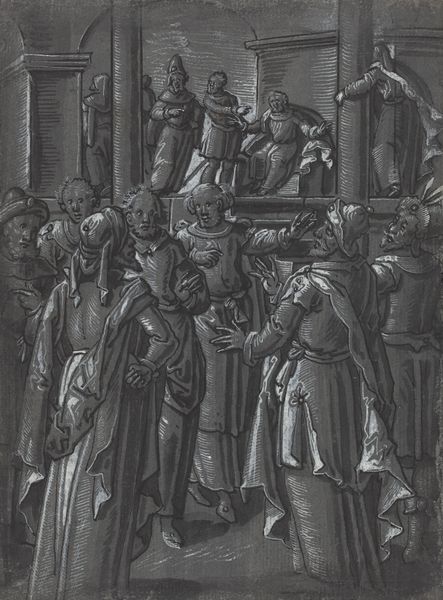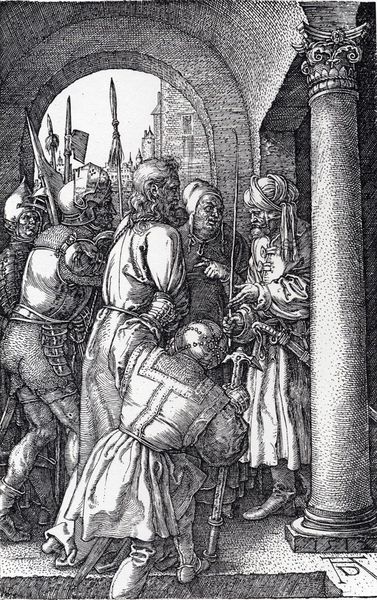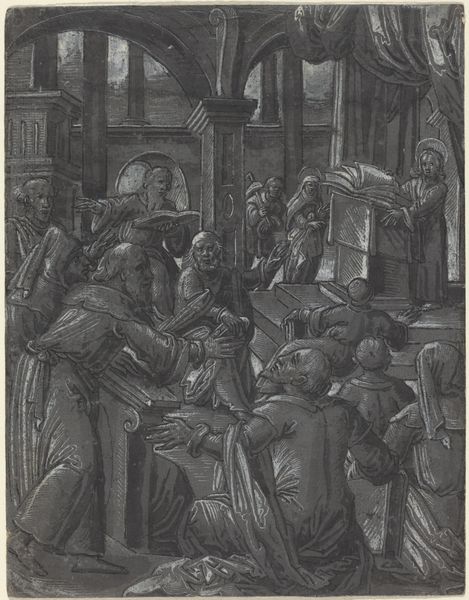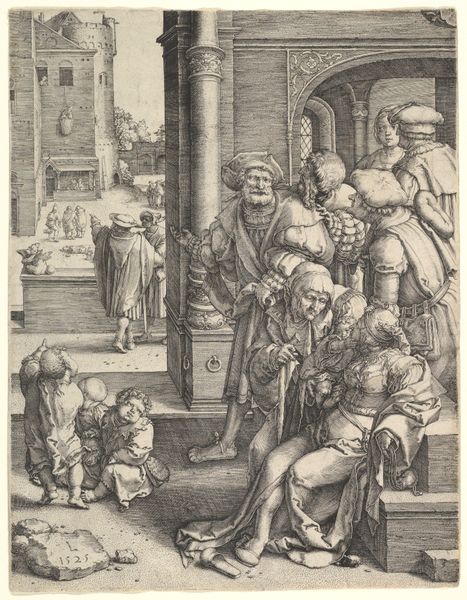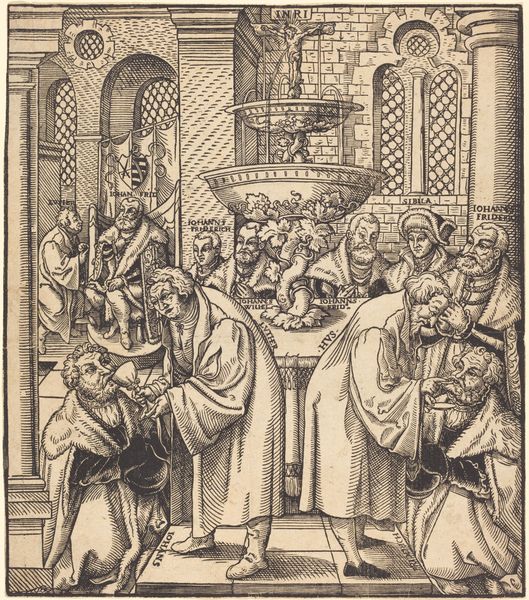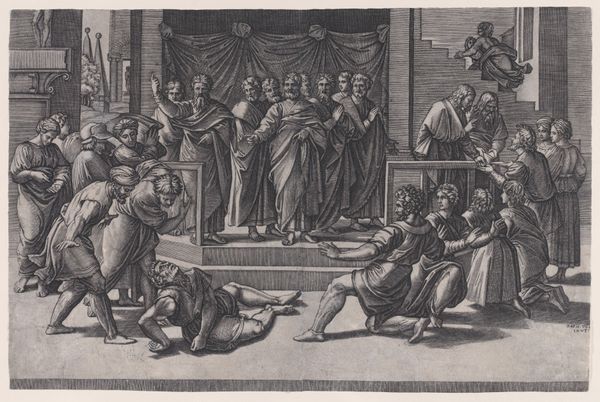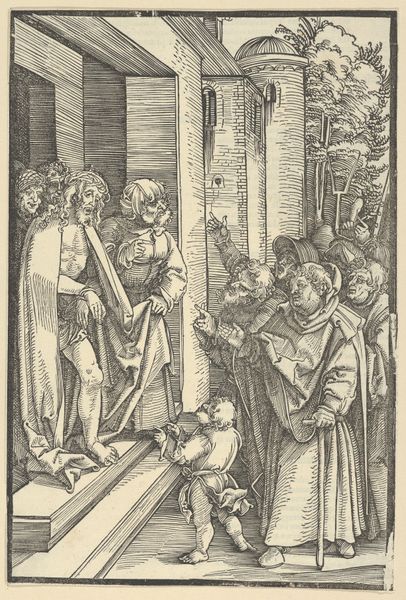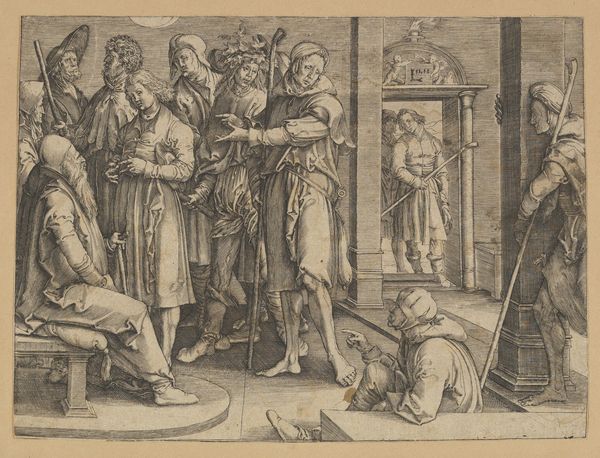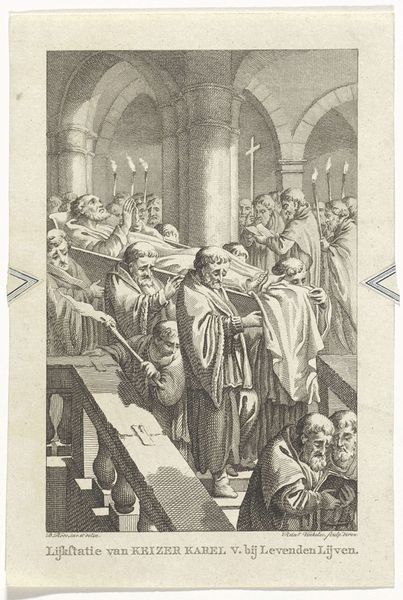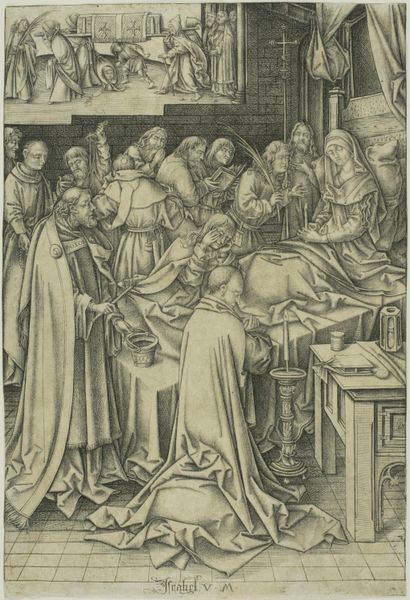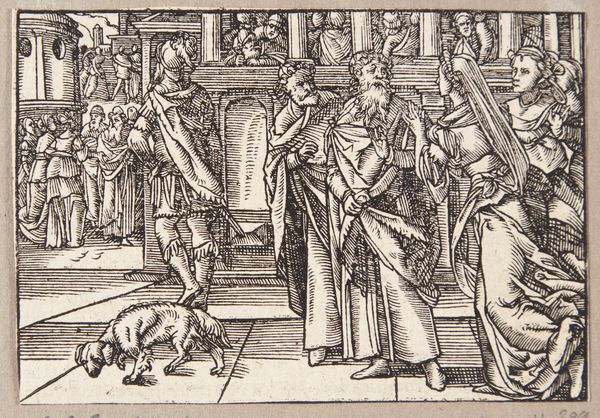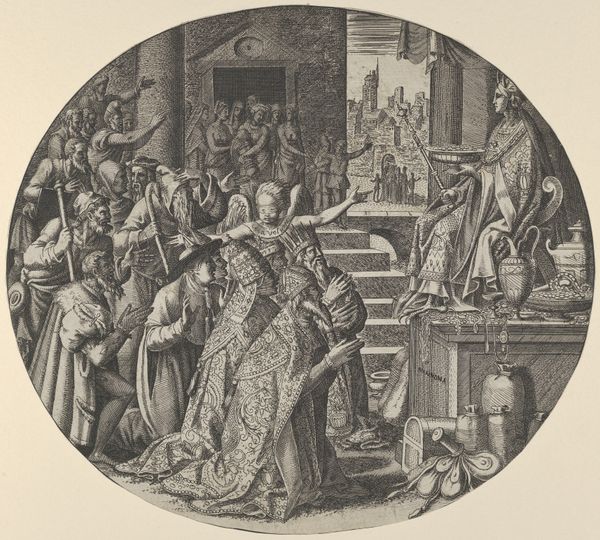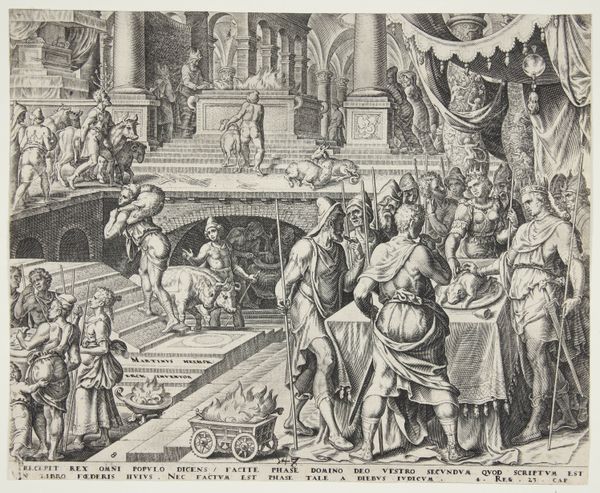![Christ Healing the Lame [verso] by Anonymous](/_next/image?url=https%3A%2F%2Fd2w8kbdekdi1gv.cloudfront.net%2FeyJidWNrZXQiOiAiYXJ0ZXJhLWltYWdlcy1idWNrZXQiLCAia2V5IjogImFydHdvcmtzLzJlMjI1NTMwLWJhOGItNDJlYS04ZjY5LTk1NmM4N2UyNDBkYS8yZTIyNTUzMC1iYThiLTQyZWEtOGY2OS05NTZjODdlMjQwZGFfZnVsbC5qcGciLCAiZWRpdHMiOiB7InJlc2l6ZSI6IHsid2lkdGgiOiAxOTIwLCAiaGVpZ2h0IjogMTkyMCwgImZpdCI6ICJpbnNpZGUifX19&w=3840&q=75)
drawing, print, engraving
#
drawing
#
medieval
#
narrative-art
# print
#
figuration
#
line
#
genre-painting
#
history-painting
#
northern-renaissance
#
engraving
Dimensions: overall: 20.8 x 15.5 cm (8 3/16 x 6 1/8 in.)
Copyright: National Gallery of Art: CC0 1.0
Editor: This is "Christ Healing the Lame," a print, an engraving really, made around 1600 by an anonymous artist. It feels so densely packed, with so many figures crammed into the architectural space. How does its historical context affect the message that it conveys? Curator: Considering its period, it's vital to recognize how such prints functioned within society. These weren't merely artistic expressions; they were powerful tools of religious and social instruction. How do you see that playing out visually here? Editor: Well, I see Christ elevated on what looks like a pulpit, very central and the light appears to be centered there, shining over everyone as if it emanated from the biblical scene. It commands all attention. Is that on purpose? Curator: Precisely! Notice the meticulous detail in the architectural setting, framing the miraculous act within a context of established power. But, consider this: who had access to these prints? And what stories were they designed to tell, not just about Christ, but about the Church itself? Editor: So, it’s not just about religious devotion, but also about reinforcing the Church’s authority and possibly providing access to the sacred to many who couldn’t access it firsthand, like the illiterate. Is the chaos of figures then a deliberate choice to represent the world’s need for the Church’s intervention? Curator: An astute observation! This engraving becomes a political statement about the role of religious institutions within daily existence. Can art ever truly exist outside such structures? Editor: Wow, I had been interpreting this artwork just through an artistic lens. Thanks to you, I understand now how the socio-political elements intertwine with this imagery and create multiple narratives. Curator: It’s a vital lesson. Always consider who is speaking, to whom, and within what societal framework. It changes how we view the piece, doesn’t it?
Comments
No comments
Be the first to comment and join the conversation on the ultimate creative platform.
